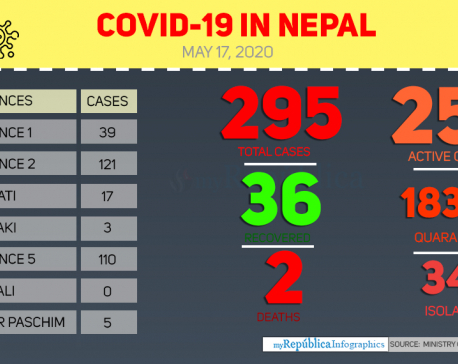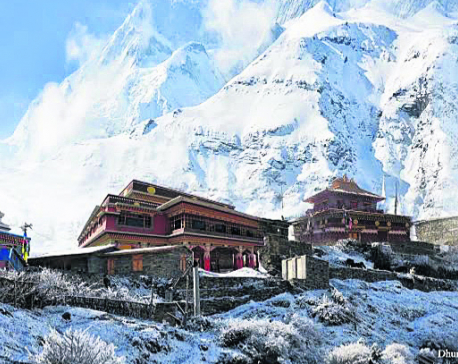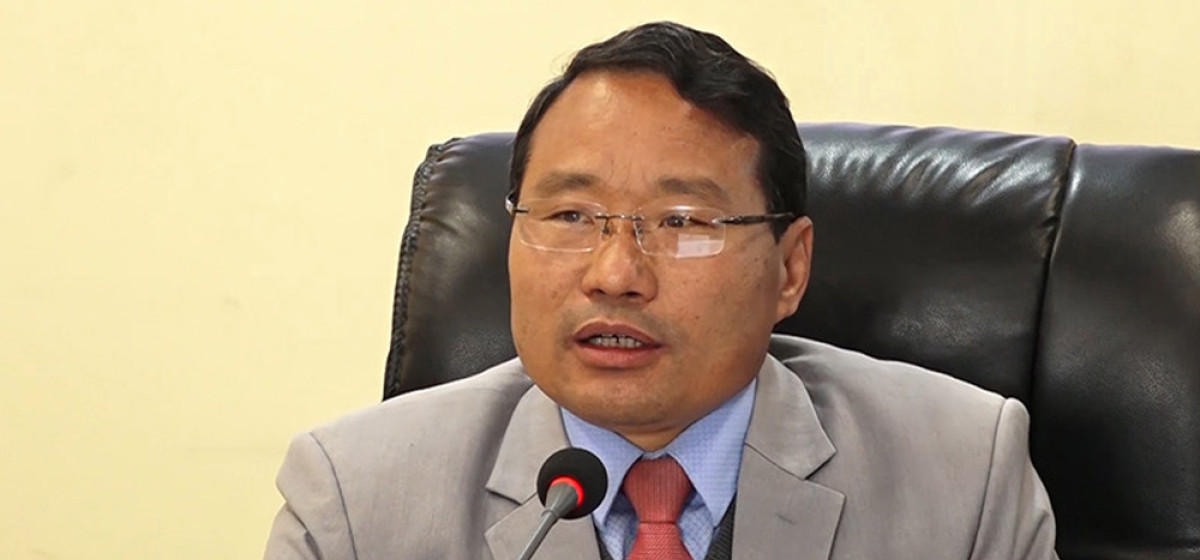
OR
Solar farming can revolutionize Nepal’s farming
Published On: June 16, 2020 11:52 AM NPT By: Sharad Sharma and Tapendra Chand

Sharad Sharma and Tapendra Chand
Sharma is a agriculture specialist at the Office of the Investment Board Chand is an energy specialist at the Office of the Investment Boardnews@myrepublica.com
More from Author
Solar farms require large areas of land, and using agricultural lands for such a purpose might lead to food insecurity. Before deciding on solar farms, cost-benefit analysis should be considered. There is ongoing research on farming under solar panels, namely agrivoltaics (APV), and it is gaining popularity.
Nepalis farmers have to face uneven rainfall patterns. Farming under shade conditions help retain better soil moisture, save energy, and conserve water. Key shade loving crops with long duration storability and high market values have the potential to grow under the solar panels. One advantage of APV is to provide combined outputs with solar energy and agricultural produce. There are options to produce semi-shade loving (2-3 hours of sunlight in a day) crops on the module inter-row spacing (normally ranges from 1.7 to 1.8 meter in case of Nepal) of the solar panel system. Additionally, another option would be to cultivate shade tolerant crops under solar panels and maintaining panel height in between 2-3 meters would be adequate.
Research shows that there is moisture in the air due to a lower vapor pressure deficit in the APV system. Plant species grow well in balanced soil moisture, cooler day temperature and warmer night temperature, and cooler day temperature enhances the efficiency of the solar panel systems. There is mutual benefit to both crop species and solar panels for efficient generation of electricity with better yield of high value agricultural commodities. Recently, French agricultural PV specialist Sun’Agri has revealed the results of tests run on a solar plant integrated with viticulture (wine growing). During heat waves, the company said, vines shaded by solar panels continued to grow and needed less water. The Sun’Agri 3 program, which is currently under demonstration phase, will initiate its commercial farming in 2022, and includes agrivoltaic projects linked to arboriculture, greenhouse gardening and arable crops across 15 installations.
The main associated challenge for this system is difficulty in soil tillage or pulverization and intercultural operations. In APV, selection of crop species could be challenging. However, it creates an opportunity to identify high value agricultural shade tolerant species that need proper care for cultivation, bear high export potential and potential for processing of high value products. Herbs to medium height shrubs grow under solar panels.
In Nepal, even if agricultural and forest-based lands are properly utilized, there exist several unproductive land areas in uphill, Mid-hill and Tarai areas. For example, semi-sandy and non-forest grasslands in Tarai, Hill and Mountain areas with dry and bare lands are potential domains for Nepal to develop agrivoltaics. This approach not only maintains the energy mix requirements, they support in disaster conditions by supplying electricity at emergency and agricultural produce of desired quality. Hill and Tarai-based farming systems both can utilize the electricity developed by APV for a technically improved irrigation system.
Floriculture is one of the most suitable businesses for APV. This business faces challenges due to seasonal fluctuation, lack of cold storage facilities and changes (with little deviation) in production and demand time in Nepal. Cultivating the complete or partial shade loving flower species can bridge the gap with this integrated solar cultivation system. Some examples of beautiful flowers/ornamentals like peace lily, croton and pothos, white orchids, snake plant, peacock plant grow in medium to low light conditions. These can be grown in indoor conditions well. Cardamom (Amomum Elettaria) needs special care during germination and can survive well in shade conditions, which has high market value. Agrivoltaics also creates opportunities to grow shade loving vegetables, cherry tomatoes, salad, and chilies as per the market demand. Also, medicinal, aesthetic plants and herbs like aloe vera, caladium, peppermint, crepe ginger, feverfew, catnip, lucky bamboo are other possible high demanding crop species. In addition, it creates an opportunity to introduce exotic high value crops being cultivated in the similar system and biophysical environment.
Agrivoltaics can be used to expand improved farming in all possible ecological zones with potential crop diversification and industries wherein generated electricity could be properly utilized.
Sharma is a agriculture specialist at the Office of the Investment Board
Chand is an energy specialist at the Office of the Investment Board
You May Like This

Health ministry confirms three new COVID-19 cases, number of total cases reaches 295
KATHMANDU, May 17: Nepal reported three new cases of COVID-19 on Sunday evening, taking the national tally to 295. ... Read More...

Dhurmus, Suntali to build ‘a Nepal within Nepal’
KATHMANDU, June 5: After successfully completing three settlement projects for earthquake victims and other communities, the actor couple Sitaram Kattel (Dhurmus)... Read More...

Nepal vs Kenya: Five crucial things Nepal looks for second match
KATHMANDU, March 12: Nepal is taking on Kenya on Monday in the second match of the ICC World Cricket League... Read More...





Just In
- Fugitive arrested after 26 years
- Indian Potash Ltd secures contract to bring 30,000 tons of urea within 107 days
- CAN adds four players to squad for T20 series against West Indies 'A'
- ‘Precast' technology introduced in the construction of bridges along Muglin-Pokhara road
- Leopard attack injures young man in Kanchanpur
- SC rejects writ petition filed against Home Minister Lamichhane
- Nepal and China sign two agreements in the presence of Finance Minister Pun
- Pun released on bail in Supreme Cooperative fraud case














Leave A Comment